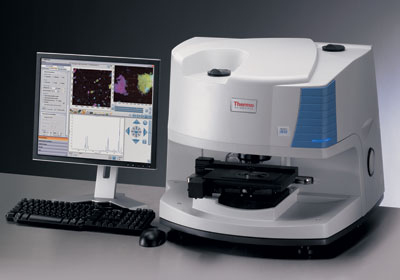
ART FAKE TECHNOLOGY
$6 billion a year is the sum the Federal Bureau of Investigations says is paid for forged, misattributed and stolen art. Until now serious connoisseurship and provenance researchers have been the main resource in helping the market to avoid fakes but recent developments in technology now available or currently in development are gaining acceptance says Forbes. And while some technologies are still prohibitively expensive, software tools in particular are affordable and in some cases even free.
Spectroscopy: FTIR and Raman
Fourier transform infrared (FTIR) spectroscopy and Raman spectroscopy – a staple in medical and weapons research labs for a decade or two – have gained acceptance in the art world in the past five years.
Both provide a nifty way to tell what the ingredients in a surface coating are because there’s no need to chip off a sample of the paint. Just shoot a light beam at a surface–a Raman microscope can zoom down to areas as small as one-1,000th of a millimeter–and then match the pattern of absorbed or altered wavelengths detected to those of known materials. Most major museums still don’t have this equipment, which can cost $100,000 to buy.
Canvas thread analysis software
This software, developed at Cornell University by Professor Richard Johnson, is currently being offered free although there are plans to charge for it later.
Curators have known for years that the slight irregularities in the spacing of threads in old canvases, particularly those woven on hand-operated looms, are almost as distinctive as fingerprints. Alas, measuring the spacing between canvas threads by hand is painstaking, so it’s virtually never done.
Designed to run on Windows XP, this software doesn’t even require curators to make new scans of their paintings. It interprets the drawer-fulls of X-ray scans that most museums have already taken of their paintings.
Johnson has been asking museums who accept his free software–two of the recent takers are the Van Gogh Museum in Amsterdam and the Rice Museum in Georgetown, S.C.–to publish reference catalogs of their canvases for use by other curators and art authenticators.
Brush stroke analysis software looks promising
Some experimental new computer programs seem to be able to spot a fake by mathematically comparing brush stroke patterns–how many, how long, how thick–to brush strokes on better-known works by the same artist. Last summer the Van Gogh Museum in Amsterdam commissioned a forgery of one of its paintings and presented a high-resolution image of the fake along with shots of four authentic Van Goghs to three teams of brush stroke-analysis researchers. All three teams succeeded at ferreting out the forgery.
Penn State computer science professor James Z. Wang, who headed one of the three teams, admits his software probably isn’t good enough yet to catch a master forger whose brush strokes would match the original artist’s closely. But there’s enormous promise for the future.
Forbes for full story



